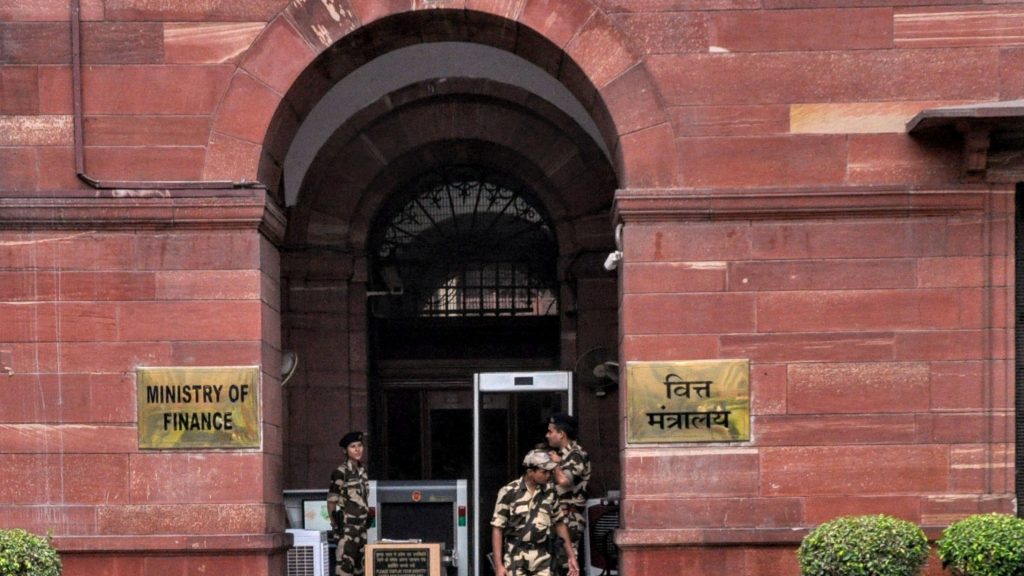
Many BFSI entities, trade chambers, and industry associations have sent detailed recommendations and expectations to Finance Minister Nirmala Sitharaman who will be presenting the Union Budget for 2023-24 on February 1.
UPI on credit card can be a masterstroke
Shailendra Singh, MD & CEO, Bank of Baroda Financial Solutions (BBFS): The credit card business is a barometer to judge the overall financial well-being of society. Government initiatives around the payment of advance tax or GST through credit cards is a welcome step and we expect more such use cases to be built around the credit carMany BFSI entities, trade chambers, and industry associations have sent detailed recommendations and expectations to Finance Minister Nirmala Sitharaman who will be presenting the Union Budget for 2023-24 on February 1.d ecosystem. UPI on credit cards can prove to be a masterstroke, with a combo of instant payment and credit. We expect the budget to generate the tailwinds needed for credit card issuers to enhance their businesses.
Increase capex, focus on privatization
Sanjiv Bajaj, President, Confederation of Indian Industry (CII): The budget should adhere to the fiscal deficit target of 6.4% of GDP for this fiscal, reducing it to 6% in FY 24 and to 4.5% by FY 26. There should be an aggressive focus on privatization. The responsibility and authority for disinvestment could be transferred to DIPAM once a decision has been taken to privatise a PSU. The budget should also target higher asset monetisation receipts in FY24 as per the National Monetization Pipeline. Also, broaden the tax base, with the goal to increase the tax/GDP ratio to at least 16% over the medium term from the current level of 11.7%.
The budget should address the sluggish recovery in demand at the lower end of the consumption strata by rationalising personal income tax slabs and rates at the lower end. The corporate tax rates should be maintained at the current levels. To support demand and growth, budget should increase allocation to capital expenditure by 35%, like last year, taking the total public capex to about Rs 10 trillion. This must also focus on rural infrastructure which would help create employment in rural areas and boost rural demand. To meet the aspirations of India’s youth, announce an Employment Linked Incentive Scheme for tourism, logistics, retail and film, animation and gaming. Expedite the DESH (Development of Enterprise and Service Hubs) Bill to replace the existing SEZ Act and implement NITI Aayog’s recommendations on creating Coastal Economic Zones (CEZs). India should leverage its low-cost production advantage to boost exports.
Increase FDI limit to 100% in insurance
Anup Rau, MD & CEO, Future Generali India Insurance: The much-awaited proposal to increase the FDI limit to 100% in insurance could be taken up during the budget, which would augur well for insurers who will get fresh capital. There is a strong case for increasing deduction limits for health insurance in the coming budget.
Reduce duty on bullion to cut working capital blockage
Vipul Shah, Chairman, Gem & Jewellery Export Promotion Council (GJEPC): Import duty on gold, silver and platinum should be reduced to 4% for a healthy and transparent industry, blockage of working capital of exporters should be decreased. GJEPC believes that this import duty is draining off the capital from the exporters. GJEPC seeks to introduce a Jewellery Repair Policy to make India a global outsourcing service centre and to increase India’s market share in it to grow to around US$ 5.75 billion by 2026. The other measures of its wishlist include allowing sale of rough diamonds in special notified zones and abolishing import duty on lab-grown diamond (LGD) seeds.
Allow deduction of Rs 1.75 lakh for premiums
Satishwar B, MD & CEO, Aegon Life Insurance (LI): Pension/annuity proceeds should be made tax-free in the hands of policyholders, or a deduction for the principal component should be allowed. Further, an aggregate deduction of up to Rs 1.75 lakh, for the premiums paid for life and health can be introduced to nurture the ecosystem of insurers, insurtechs and consumers. The amendments to the ‘Regulatory Sandbox’ will enable digital insurers to try out and optimise new products more easily.
Liberalisation of credit lines from banks
Deepak Kothari, Co-founder, ftcash (NBFC): The provision of a government scheme which provides a sovereign guarantee by the government of credit lines will help channelise and enhance access to funds for fintechs and also allow targeting of certain segments/ regions in a cost-efficient manner. Ensuring that the input credit is fully provided for will go a long way in ensuring that revenue leakages are avoided and benefits can be consequently passed on to the end consumer. A seamless, efficient and transparent process, which provides for a time-bound resolution of cases, where EMIs go into default will ensure that the financial services industry is strengthened.
It would be broadly a continuity on taxation
Prateek Agrawal, Executive Director, Business & Investment Strategy, Motilal Oswal AMC: The revenue momentum for the government should be expected to slow down. Asset monetization could be the chosen route of the government. While many PSUs are slated to be sold, that window may be rapidly closing, given the tight global liquidity. More PLI schemes should be expected in new areas. On taxation, I believe it would be broadly a continuity. In the past, we have seen capital gains taxation for unlisted equity and for bonds being converged with equity and more should continue to be expected in this budget.
__________________________
Read more-







